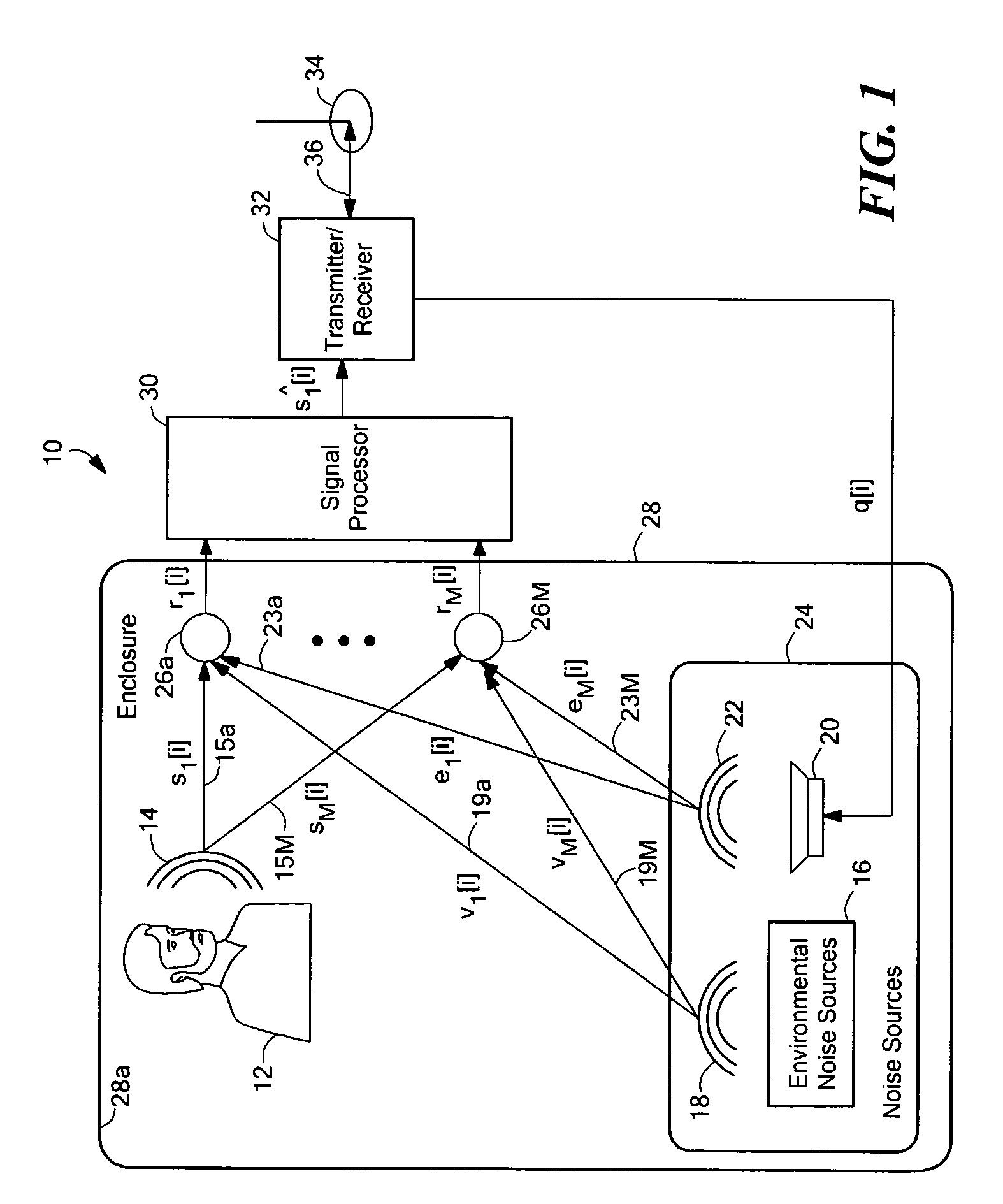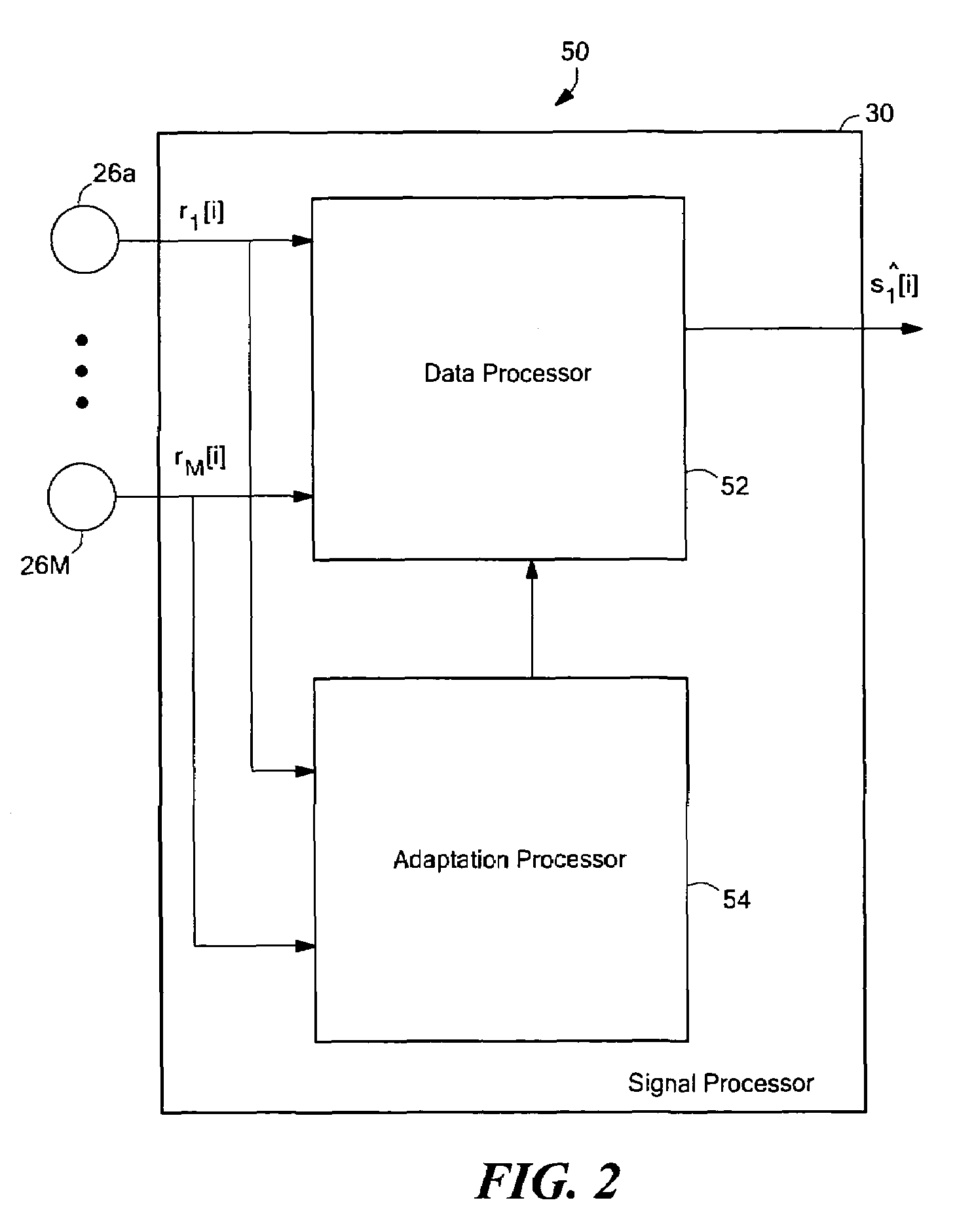System and method for noise reduction having first and second adaptive filters
- Summary
- Abstract
- Description
- Claims
- Application Information
AI Technical Summary
Benefits of technology
Problems solved by technology
Method used
Image
Examples
Embodiment Construction
[0035]Before describing the noise reduction system in accordance with the present invention, some introductory concepts and terminology are explained.
[0036]As used herein, the notation xm[i] indicates a scalar-valued sample “i” of a particular channel “m” of a time-domain signal “x”. Similarly, the notation x[i] indicates a scalar-valued sample “i” of one channel of the time-domain signal “x”. It is assumed that the signal x is band limited and sampled at a rate higher than the Nyquist rate. No distinction is made herein as to whether the sample xm[i] is an analog sample or a digital sample, as both are functionally equivalent.
[0037]As used herein, a Fourier transform, X(ω), of x[i] at frequency ω (where 0≦ω≦2π) is described by the equation:
[0038]X(ω)=∑ix[i]ⅇ-jωⅈ
[0039]As used herein, an autocorrelation, ρxx[t], of x[i] at lag t, is described by the equation:
ρxxt]=E{x[i]x*[i+t]},
where superscript “*” indicates a complex conjugate, and E{ } denotes expected value.
[0040]As used...
PUM
 Login to View More
Login to View More Abstract
Description
Claims
Application Information
 Login to View More
Login to View More - R&D
- Intellectual Property
- Life Sciences
- Materials
- Tech Scout
- Unparalleled Data Quality
- Higher Quality Content
- 60% Fewer Hallucinations
Browse by: Latest US Patents, China's latest patents, Technical Efficacy Thesaurus, Application Domain, Technology Topic, Popular Technical Reports.
© 2025 PatSnap. All rights reserved.Legal|Privacy policy|Modern Slavery Act Transparency Statement|Sitemap|About US| Contact US: help@patsnap.com



